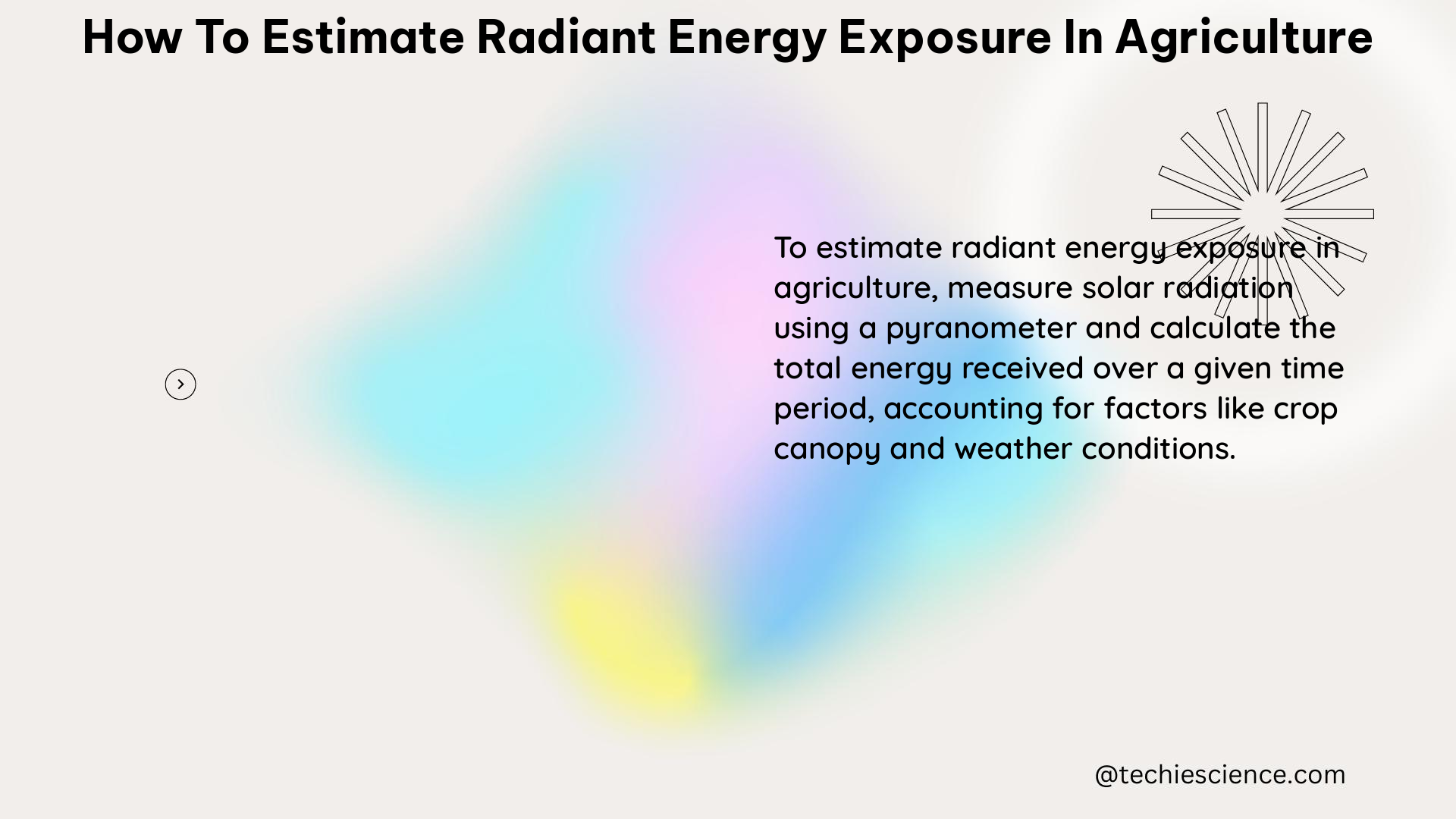Estimating radiant energy exposure in agriculture is a crucial task for understanding the potential impacts of radiation on crops, soil, and water resources. This comprehensive guide provides a detailed overview of the key factors and methods involved in this process, including the measurement and estimation of radionuclide activity, environmental transport, exposure factors, dose conversion, and uncertainty and validation.
Radionuclide Activity Released into the Environment (A)
The first step in estimating radiant energy exposure in agriculture is to determine the amount of radioactive material that is released into the environment from agricultural activities. This can be measured using various techniques, such as gamma spectrometry or liquid scintillation counting. The activity of the radioactive material is typically measured in becquerels (Bq), which represents the number of radioactive decays per second.
Environmental Transport (T)

Once the activity of the radioactive material is known, the next step is to estimate how it moves through the environment, including air, water, and soil. This can be done using mathematical models that take into account factors such as weather patterns, soil composition, and water flow. These models can help predict the distribution and concentration of the radioactive material in the environment over time.
Exposure Factors (E)
The exposure factors are the factors that determine how much radiation an individual or population is exposed to, including factors such as time, distance, and shielding. These factors can be estimated using measurements or calculations based on factors such as soil moisture, air temperature, and wind direction.
Conversion to Organ or Tissue Dose (K)
The next step is to convert the measured or estimated radiation exposure into a dose that can be used to assess health risks. This can be done using mathematical models that take into account factors such as the type of radiation, the energy of the radiation, and the sensitivity of the organ or tissue being irradiated.
Uncertainty and Validation (u, v)
Finally, it is important to consider the uncertainty associated with the measurement or estimation of radiation exposure and to validate the exposure assessment methods. Uncertainty can be estimated using statistical methods, while validation can be done using comparison with measured data or other independent methods.
Theorem
The theorem of radiation protection states that the risk of harm from radiation exposure is proportional to the dose received by the individual or population. This theorem is the basis for radiation protection regulations and guidelines, and is used to estimate the health risks associated with radiation exposure.
Physics Formula
The formula for estimating radiation dose from a radioactive source is:
Dose = (A x T x E x K) / M
where Dose is the radiation dose in sieverts (Sv), A is the activity of the radioactive source in becquerels (Bq), T is the time of exposure in seconds (s), E is the exposure factor in sieverts per becquerel per second (Sv/Bq/s), K is the conversion factor from exposure to dose in sieverts per sievert (Sv/Sv), and M is the mass of the exposed individual or population in kilograms (kg).
Physics Examples
An example of radiation exposure in agriculture is the use of fertilizers containing radioactive materials, such as potassium-40 (40K). The 40K in the fertilizer decays by beta emission, producing radiation that can expose crops, soil, and water. The radiation exposure can be estimated using the formula above, taking into account the activity of the 40K, the time of exposure, the exposure factor, and the mass of the exposed crops or soil.
Physics Numerical Problems
A numerical problem related to radiation exposure in agriculture is:
A farm uses a fertilizer containing 100 kg of potassium-40 (40K) with an activity of 37,000 Bq/kg. The crops are exposed to the fertilizer for 100 days, and the exposure factor is 0.0002 Sv/Bq/s. The mass of the exposed crops is 10,000 kg. What is the radiation dose to the crops?
Using the formula above, the dose can be calculated as:
Dose = (A x T x E x K) / M
= (100 kg x 37,000 Bq/kg x 100 days x 0.0002 Sv/Bq/s x 1 Sv/Sv) / 10,000 kg
= 0.074 Sv
Therefore, the radiation dose to the crops is 0.074 sieverts (Sv).
Figures, Data Points, Values, Measurements
- Figure 3.8 in the Guidelines for Exposure Assessment shows the approximate annual terrestrial background exposures, which vary by more than a factor of 3.
- Figure 3.9 in the Guidelines for Exposure Assessment shows the spatial variation in background radiation around the Millstone plant in 2009.
- Table 3.2 in the Guidelines for Exposure Assessment shows the estimated doses to the maximum exposed individual (MEI) from facility effluent releases.
- The USDA Climate Indicators for Agriculture report provides data on climate trends and variability and their influence on U.S. agriculture, including indicators related to radiation exposure.
Reference Links
- Guidelines for Exposure Assessment
- Radiation Dose Assessment – NCBI
- Natural Radioactivity Levels and Estimation of Radiation Exposure in Agricultural Soils from Skopje City Region
- Climate Indicators for Agriculture | USDA
- GHG Protocol Agricultural Guidance
By following this comprehensive guide, you can accurately estimate radiant energy exposure in agriculture and make informed decisions about the potential impacts on crops, soil, and water resources.

The lambdageeks.com Core SME Team is a group of experienced subject matter experts from diverse scientific and technical fields including Physics, Chemistry, Technology,Electronics & Electrical Engineering, Automotive, Mechanical Engineering. Our team collaborates to create high-quality, well-researched articles on a wide range of science and technology topics for the lambdageeks.com website.
All Our Senior SME are having more than 7 Years of experience in the respective fields . They are either Working Industry Professionals or assocaited With different Universities. Refer Our Authors Page to get to know About our Core SMEs.